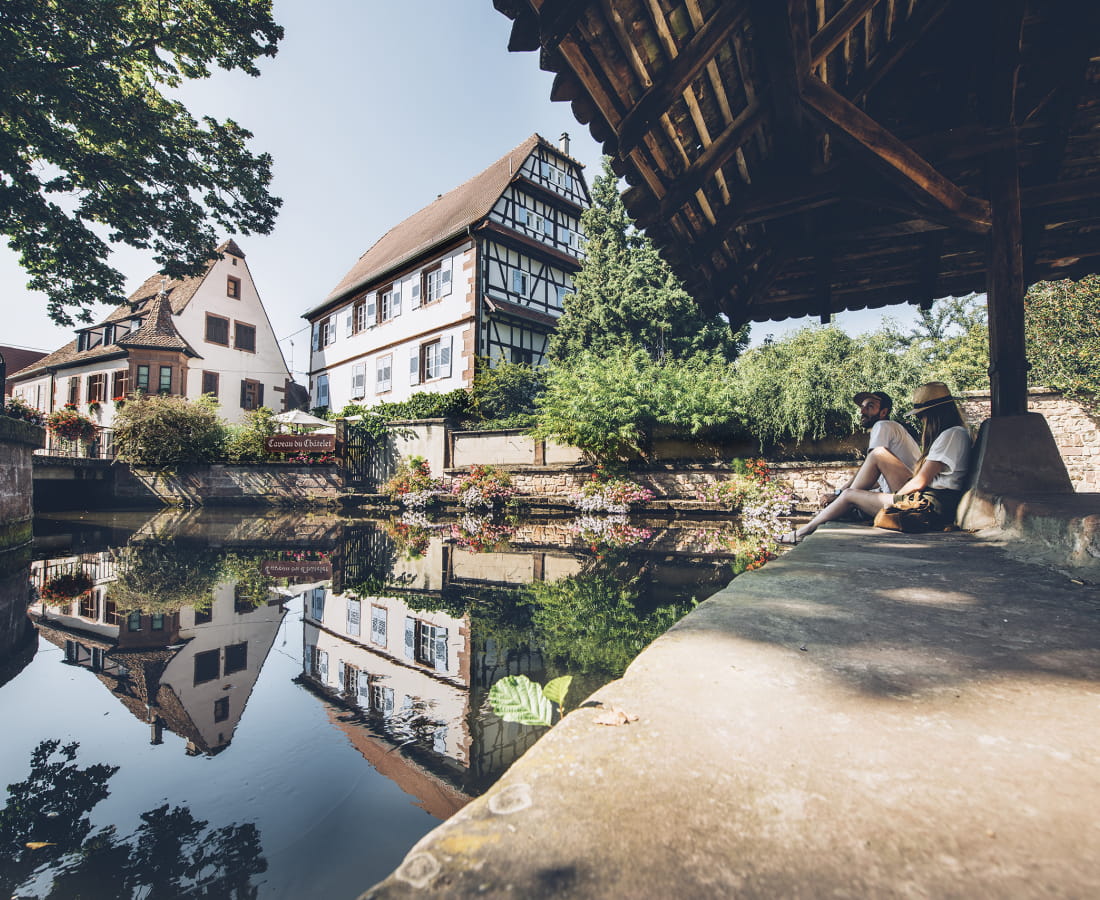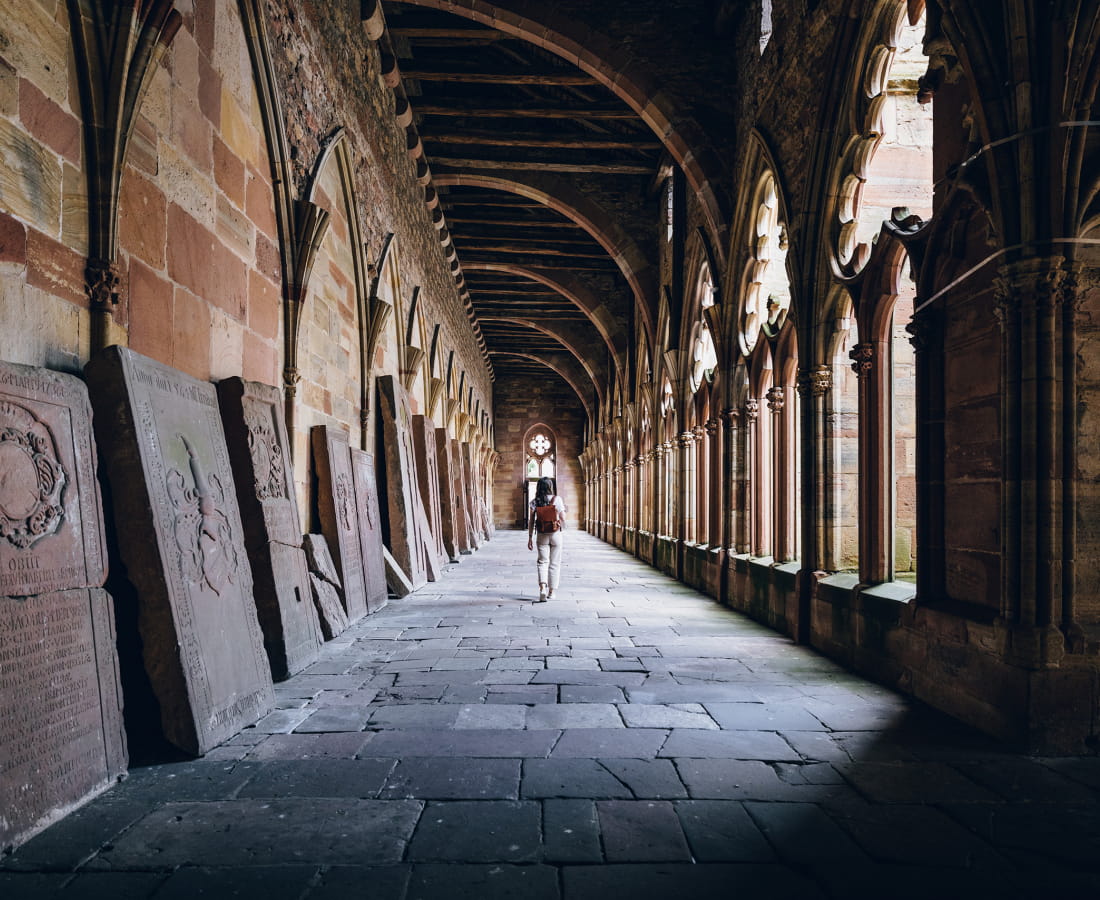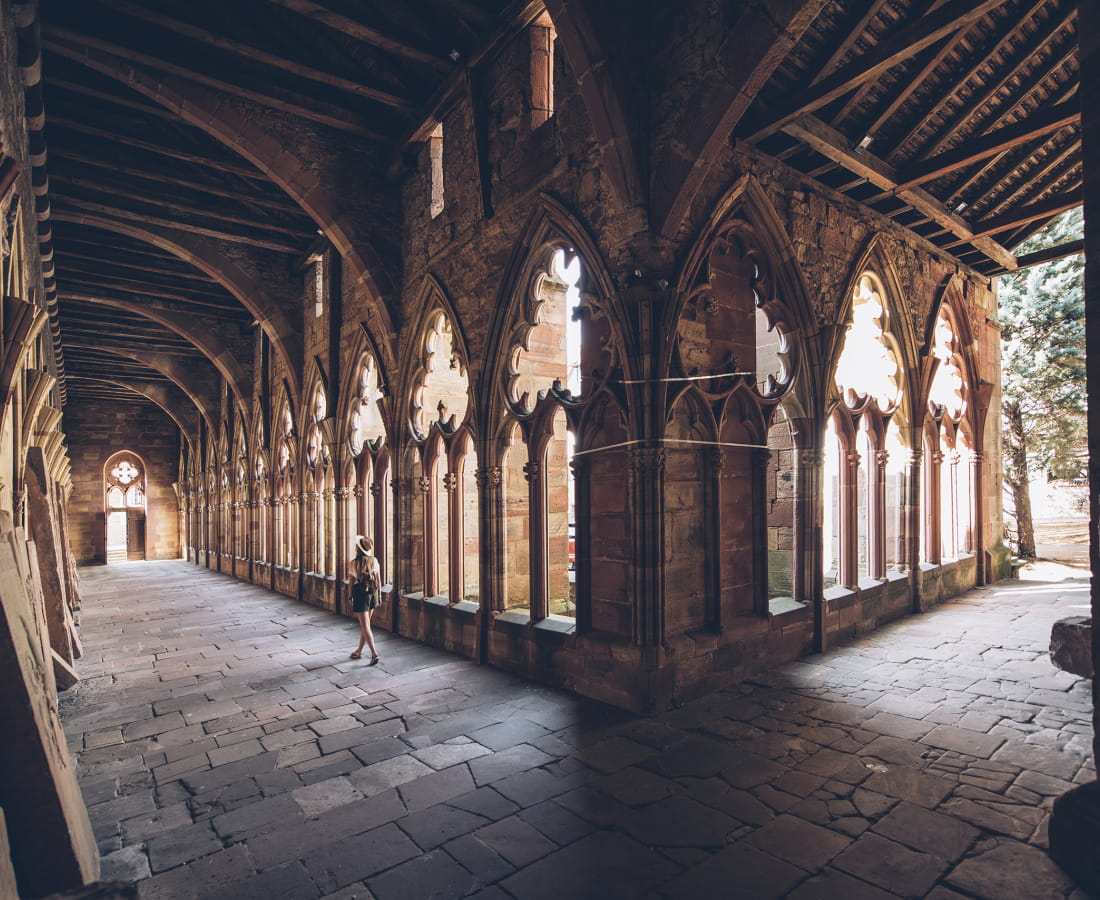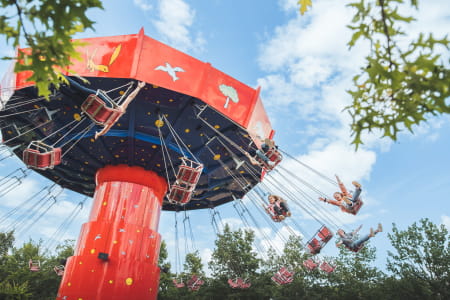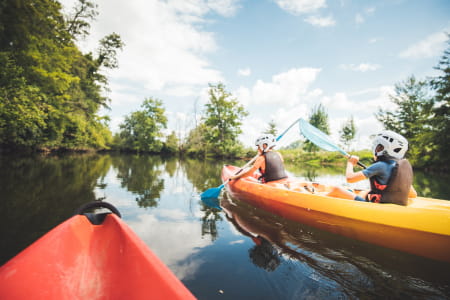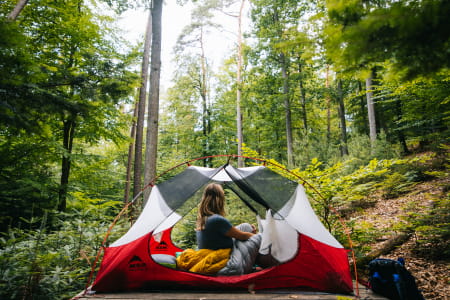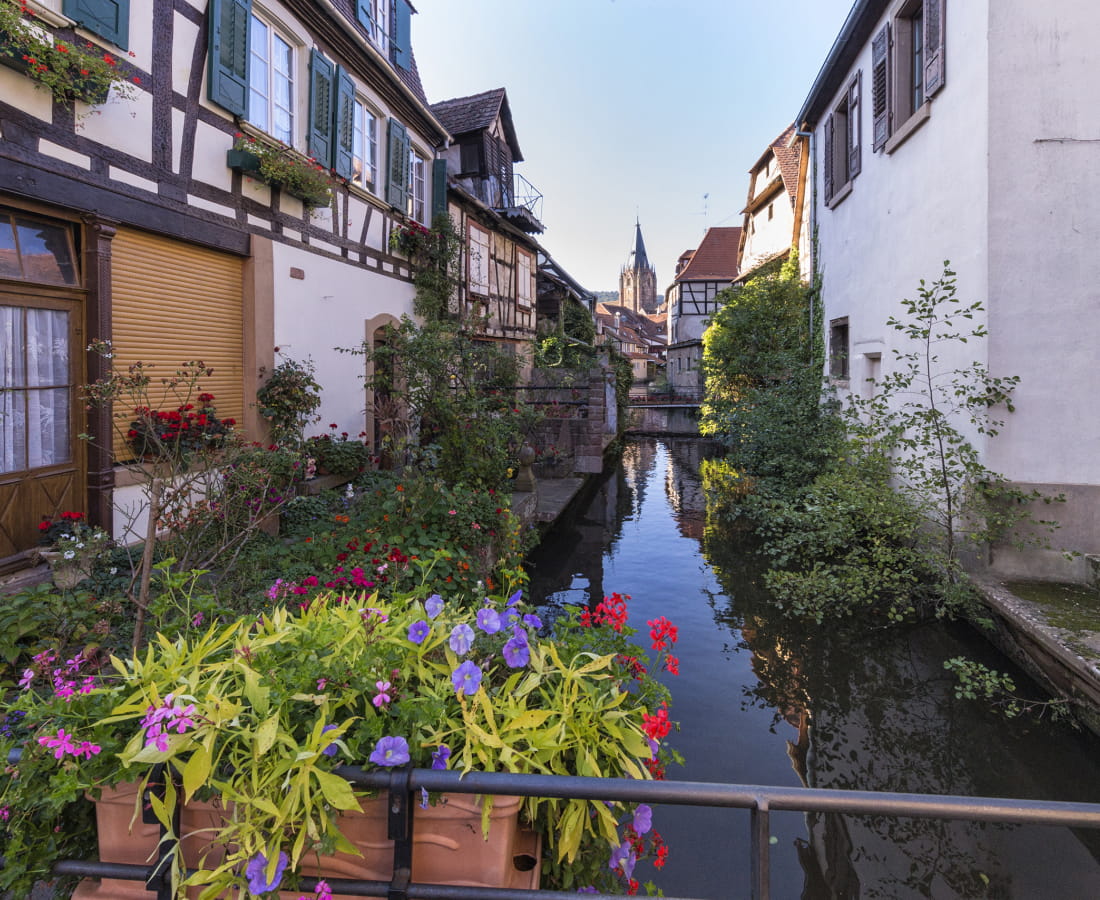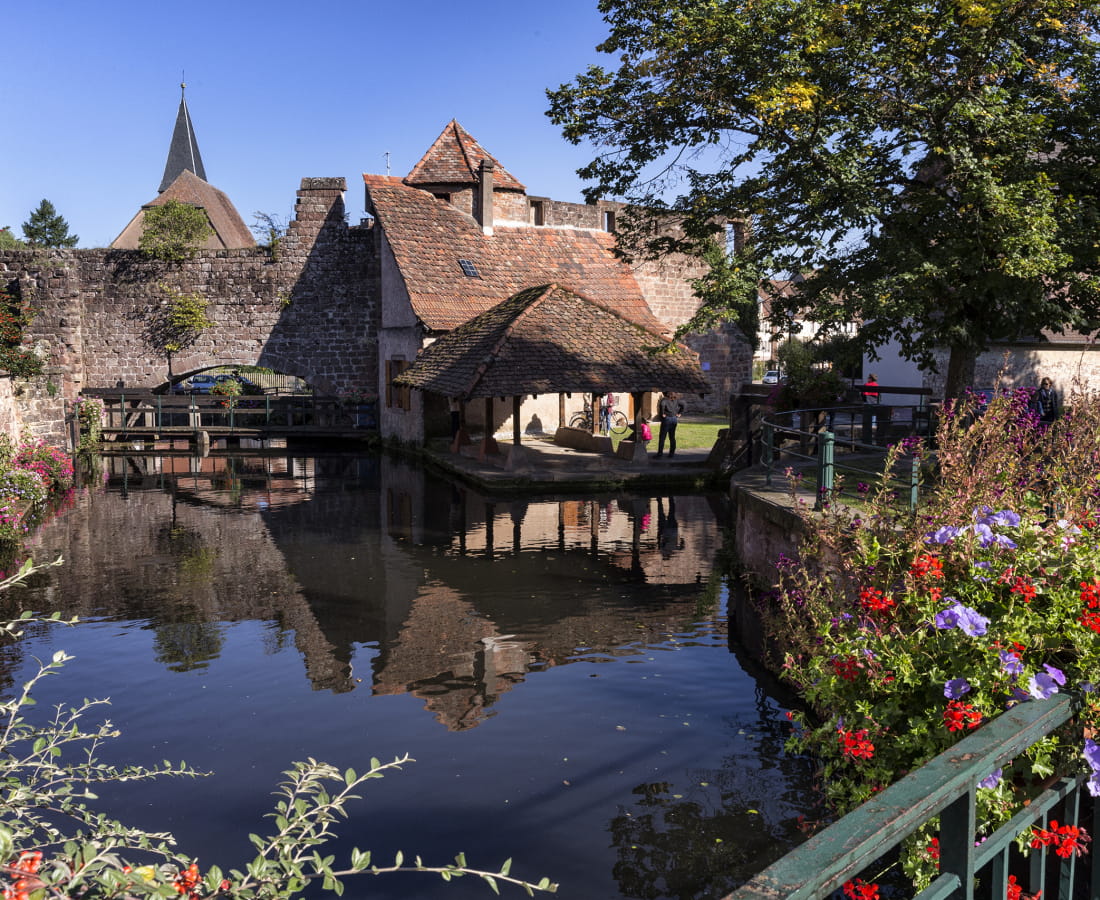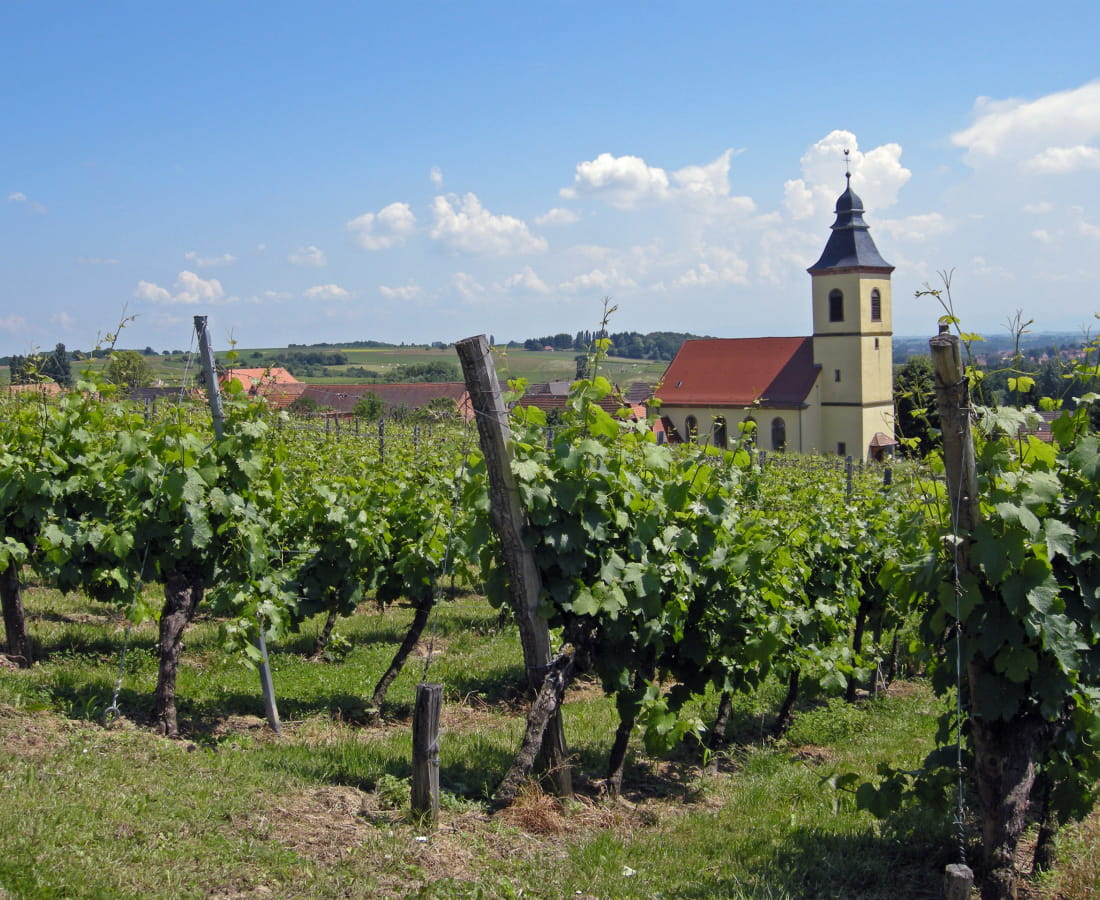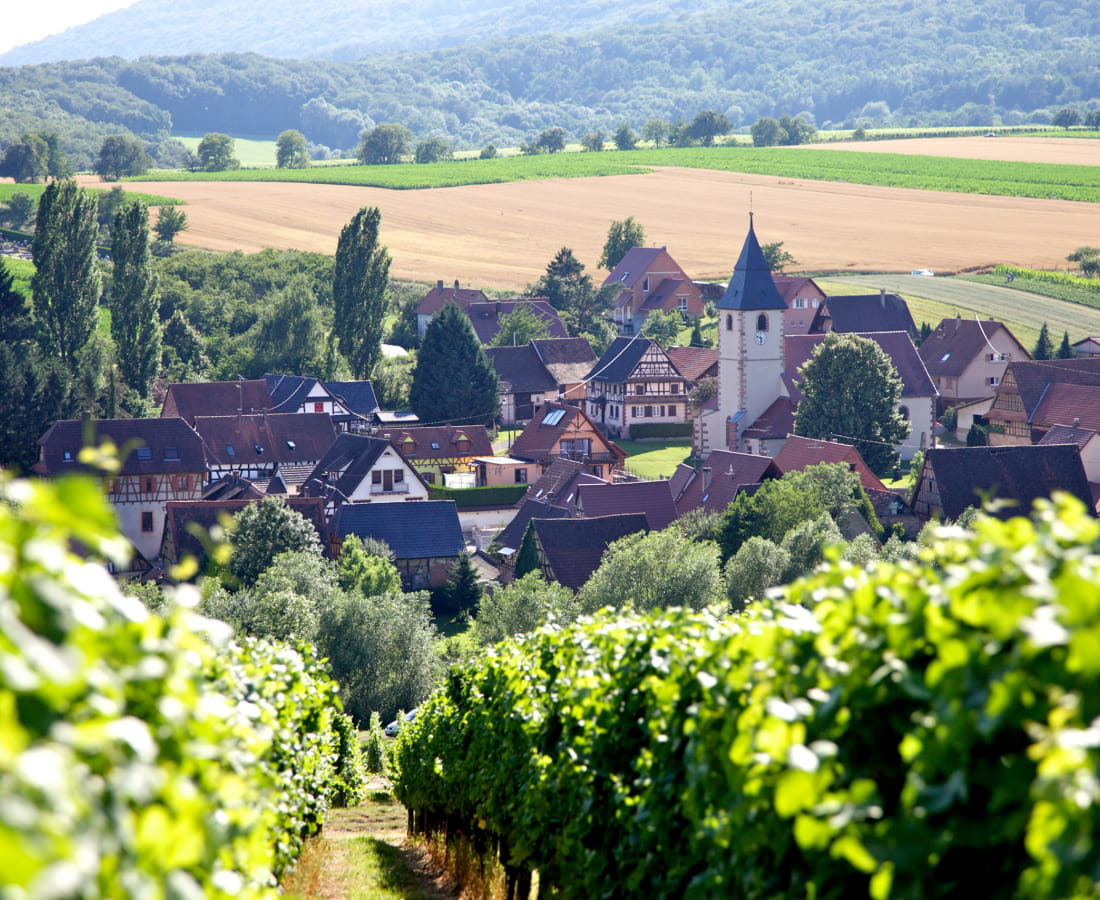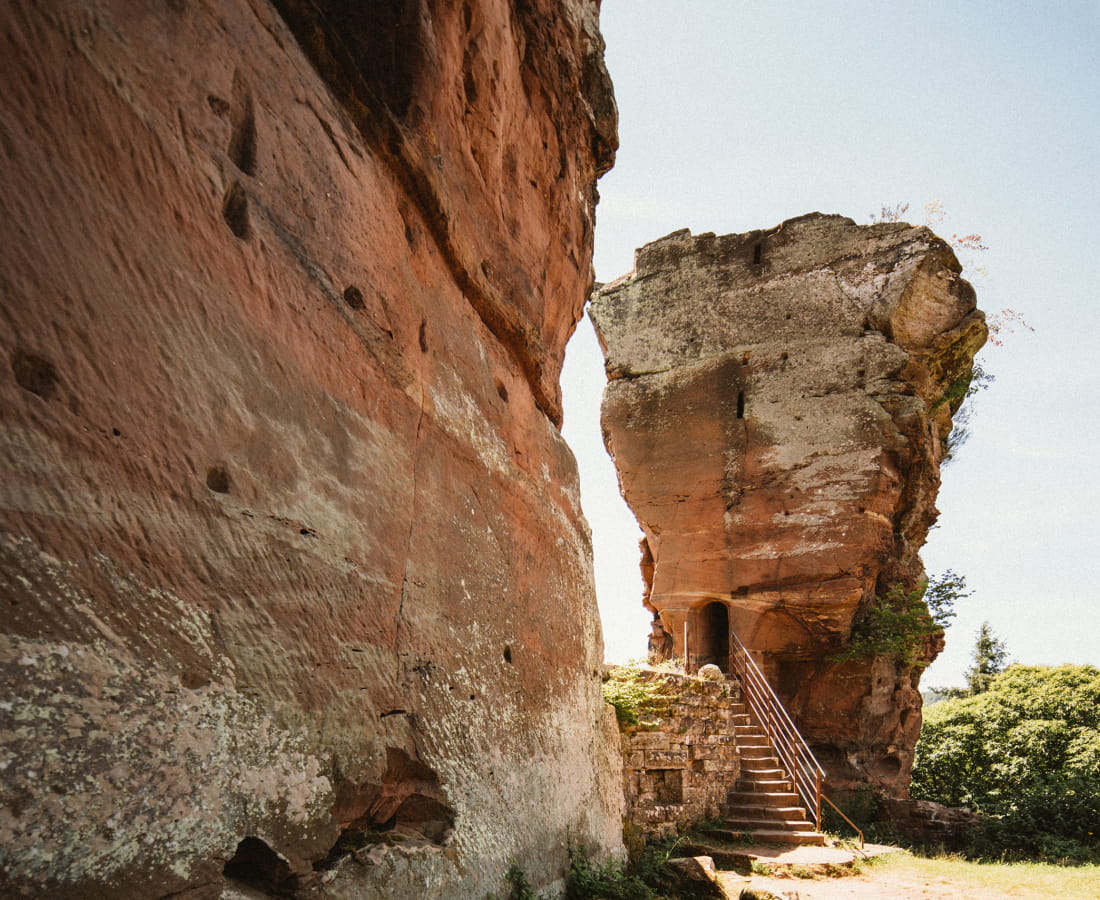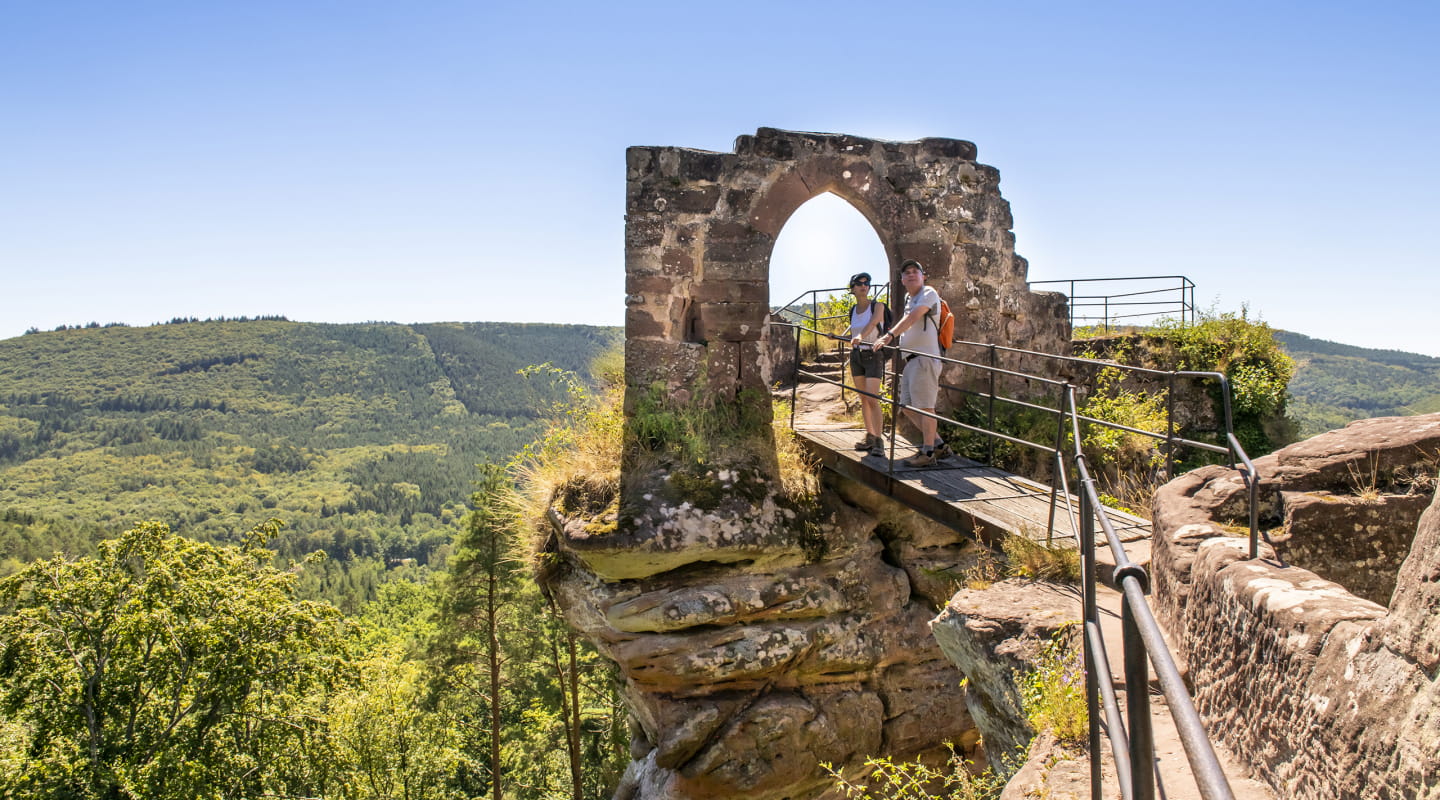
Getting into shape in the Northern Vosges
Highlights
-
Wissembourg, an authentic Alsatian town with a rich heritage
-
Fleckenstein Castle
Departing from the fortified town of Wissembourg, this first stage of the Traversée du Massif des Vosges plunges you right into the Middle Ages, with numerous remains of fortified castles, including the emblematic Fleckenstein.
Wissembourg is the starting point for the Traversée du Massif des Vosges. On the edge of Alsace and on the border with Germany, the town is also one of the gateways to the Vosges du Nord Regional Nature Park, part of an area designated a "World Biosphere Reserve" by UNESCO in 1989. Along with its German neighbour, the Pfälzerwald, the Park is part of a cross-border area classified as a "World Biosphere Reserve" by UNESCO.
Wissembourg has been awarded the "Most beautiful detours in France" label, and has a particularly well-preserved heritage. The abbey church of Saints-Pierre-et-Paul is the second largest church in Alsace after Strasbourg cathedral! Its impressive dimensions bear witness to Wissembourg's past power and wealth. This Gothic-style building is also renowned for its cloister, monumental fresco and stained glass windows. Take a stroll along the old town walls and enjoy a refreshing break as you wander through its flower-filled lanes. Like Colmar, Wissembourg also has its "Little Venice": a romantic atmosphere guaranteed!
After visiting Wissembourg, your itinerary begins with magnificent landscapes on the plain, and passes through forests of beech, oak and hornbeam. You pass over the heights of Rott, the most northerly vineyard on the Alsace Wine Route. From here to La Petite-Pierre, discover the 6 ütes along the route. These free-access stops offer great views of the surrounding area and a wealth of information on local history and services. You won't want to miss them: their colour is reminiscent of the famous red rectangle that marks out the route!
Soon, the remains of the first fortified castles can be seen along the way. Although few traces remain, Loewenstein Castle offers a fine view over the Sauer Valley and the Palatinate.
After Château du Hohenbourg, another pink sandstone building comes into view: Château du Fleckenstein. Powerful and impressive, this emblematic fortress of the Northern Vosges was built on a 100-metre-long rocky outcrop. Literally towering over the surrounding area, the castle had a long-standing reputation for being impregnable until it was destroyed by French troops in 1689. Climb the steps carved into the rock and venture into the heart of the Middle Ages. You'll have no trouble slipping into the shoes of a valiant knight of yesteryear! Discover the history and secrets of this castle, from its construction in the 12th century to the present day.
Then get back on the road: below the castle, the Fleckenstein pond offers a spot of fresh air.
A few kilometres further on, you'll discover the remains of the Château du Froensbourg, which once belonged to the Fleckenstein family. Along the way, admire the magnificent views over Alsace and the Black Forest.
Your first day's walking ends in the charming village of Obersteinbach.
Practical info
-

Access by train :
Wissembourg station
Follow the GR® 53 - red Club Vosgien markings.
You can reduce the length of this stage by spending the night at Climbach, Petit Wingen or Gimbelhof.

